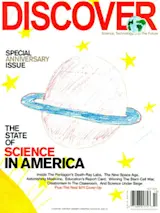For decades, scientists have known that migratory birds use Earth’s geomagnetic field—along with light, stars, and other cues—to guide them on remarkably long journeys. But it is unclear just how birds sense this relatively weak field and use it for navigation.
Now German researchers have provided new evidence supporting the notion that migratory birds actually see magnetic fields. Postdoctoral fellow Dominik Heyers and his colleagues peered into the brains of garden warblers, which travel seasonally between northern Europe and southern Africa, and uncovered a link between neurons in the eye and a region of the brain thought to be involved in migration.
To see how the warblers perceived magnetic fields, the team first had to “get the birds in a migratory mood,” which they did by shortening the birds' exposure to light, Heyers says. Then they injected a dye into cluster N, a region of the brain that is likely ...















